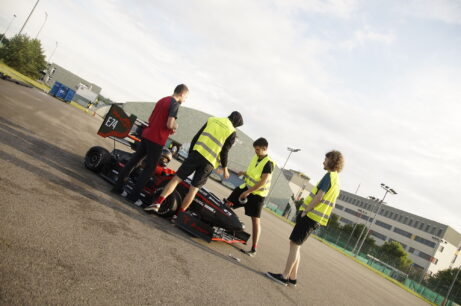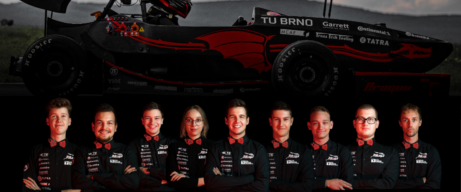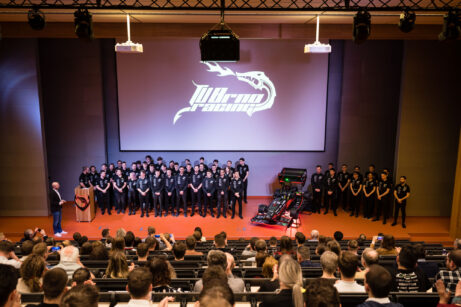Electric on Our Own
This year will be a turning point for our team and we can’t wait for the racing season. For the first time in the history of our project, we have decided to build an electric monopost, so you will find us at the races with two Dragons – a combustion DX and a new electric ED1.
Right on our first electrical formula, we set ourselves a challenging goal, namely to develop all electronic systems with the help of our own strengths and skills.
In addition to the cells themselves, the battery box contains a lot of electronics. Each of the 6 segments has its own control board that monitors the temperatures and voltages of its cells. In total, the battery contains almost 800 cells (96 voltages are monitored) and almost 150 temperatures are monitored. There is also a high voltage converter to 24V, which is used to power electronics. All subsystems are under control of main board, which monitors the battery current, the state of high voltage insulation from touching the available parts of the formula, and if everything is in order, it switches the battery output to the rest of the car.
The main vehicle control unit (VCU) together with the datalogger communicates with all devices in the car (in addition to those already mentioned, eg with a water cooling pump, fan or brake light), forwards messages, provides a gateway for configuration via computer and records data for later analysis.
The pedal box checks the safe condition of the accelerator and brake pedals and sends the calibrated values to the rest of the car, mainly to the ESP (Electronic stability program) unit, which controls the power input to the motors and serves as an electric differential, as each motor has its own fixed gearbox and drives the right, respectively left rear wheel.
We are always working on new interesting projects that aim to increase the competitiveness of the car, improve the functionality or analysis of systems. It is worth mentioning the system controlling the rear wheel steering (RWS) or magnetorheological dampers.
The electric car is full of self developed software, so certain decisions were made to find a solution that will be useful for building a driverless formula. We haven’t attended races with our first electric car yet, but we already have lots of ideas that we would like to implement in the next generation. We believe that electric powertrain has a very interesting future.
The path of self-development is certainly longer and more complicated than buying “off the shelf” systems, but it is worth it in the long run and we see it as a space for new innovations. Education is the purpose of Formula Student, and there is no better way to understand a problem than implementing your own solution.
In this way, we are able to build all the functional electronics, where we start with the miniature components, which are assembled into designed printed circuit boards, which we then program to do all the required functions. Subsequently, all our units in the car must communicate and understand each other.
The electric formula brought many new people to the team. The members are no longer almost exclusively students from the Faculty of Mechanical Engineering, but also students from the Faculty of Electrical Engineering and the Faculty of Information Technology. The same can be said about sponsors, where we have opened the doors to cooperation with companies in much wider industries than before. This is accompanied by the necessary managerial skills, which are more required in the team than ever. Whether it is the management and division of work in individual sections of the team, determining internal rules (either as lessons learned from previous mistakes or “knowledge transfer”) or communication with sponsors and fans.
We believe that after all hard work, our electric dragon will bring us a lot of success and new knowledge to take our project one step further.



